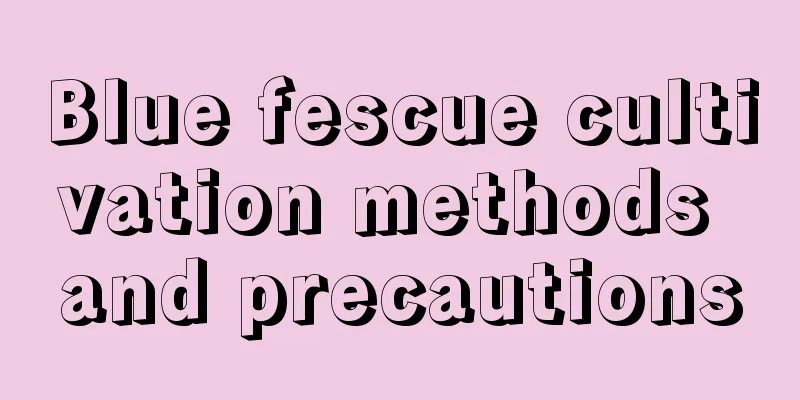Blue fescue cultivation methods and precautions

1. Maintenance methods1. Temperature: The suitable maintenance temperature is between 10 and 30 degrees. Generally, after September, the temperature will gradually decrease. When the temperature is below ten degrees, its growth will be very slow, and then it will enter a dormant period. 2. Watering: Good water management is needed in the first year of planting. The plant should not be kept in a state of water shortage. It should be watered appropriately to allow the roots to fully absorb water. In the first year, special watering is generally not required. Only in extremely dry conditions, watering is required, generally once a month. Keeping the plant properly dry in summer can turn the leaves blue, which can enhance its ornamental value. 3. Fertilization: It is tolerant to barrenness and cannot be over-fertilized. If over-fertilized, the plant will die due to loss of characteristics. Generally, it is sufficient to fertilize once a year, and use light fertilizer. 4. Light: It needs a lot of sunlight to grow. The more light it gets, the brighter its color will be. Therefore, during the maintenance process, it is necessary to give it plenty of light, preferably all-day sunlight. 2. Breeding techniques1. Reproduction: It can be propagated by sowing. The breeding time is in spring and autumn every year, because the temperature is relatively stable at this time, which is suitable for its growth. First, you need to prepare the seeds and soil. The seeds need to be soaked in fungicide for half an hour in order to enhance resistance. Then sprinkle the seeds into the soil and place them in a cool place for maintenance. It will germinate in about half a month. 2. Pruning: When the seedlings just grow out, the top needs to be cut off to promote the growth of side buds. 3. Problem Diagnosis1. Pests: Red spider mites reproduce very quickly and are very light. They like to suck the sap of blue fescue. Once found, they should be sprayed with 1.8% cypermethrin emulsifiable concentrate. 2. Diseases: Fusarium can infect most green plants, and blue fescue is no exception. Fusarium can cause the plants to rot and damage the plant's conductive tissues, making it impossible for the plant to absorb nutrients. When this happens, you need to use Amicida solution to irrigate the roots. Generally, three consecutive root irrigations can solve the problem. IV. Other issues1. Toxicity: It is non-toxic, but the juice can easily cause allergies in people, so every time you touch the juice of the plant, you must wash it as soon as possible. 2. Edibility: It is an ornamental plant and cannot be eaten. |
<<: Bitter melon cultivation methods and precautions
>>: Cultivation methods and precautions of Ligustrum lucidum
Recommend
Ginkgo seed planting method and time
1. Seed planting method 1. Substrate: Soil select...
What kind of soil is needed for growing pomegranates (soil requirements suitable for growing pomegranates)
Pomegranate trees have certain requirements for t...
What fertilizer is good for celery?
What fertilizer to use for celery Celery needs su...
Grow it when it’s cold. It’s best to plant in winter and is very cold-resistant. Friends in Northeast China can also grow it!
Although this problem is very frustrating, Huahua...
How to take care of the newly bought Cineraria
1. Lighting Cineraria likes sunshine and needs mo...
It is not difficult to make the pot full of "Kalanchoe". Just "cut" the branches frequently and the flowers will bloom unstoppably.
But it is the flowers of the Kalanchoe that worry...
How to divide purple leaf oxalis
Time for division of purple leaf sorrel Purple-le...
Four seasons maintenance methods of Anthurium
1. Spring maintenance It likes diffuse light, and...
When and how to sow carnations
1. Sowing time If you want to know the time to so...
Artificial cultivation of Cordyceps sinensis
1. Planting method 1. Home planting: If you plant...
Are Buddhist beads easy to maintain?
1. Is it easy to raise? Buddha beads are a very e...
What to do if the leaves of the weeping angel turn yellow
1. Increase the temperature 1. Reason: The weepin...
How to Make Strelitzia Bloom on New Year's Day
Actual flowering time If this kind of flower bloo...
How to plant Zi Chi Nian Hua seeds
Preliminary preparation Before the planting work ...
What to do if you accidentally eat calla lily
1. Introduction to plants It belongs to the Arace...









